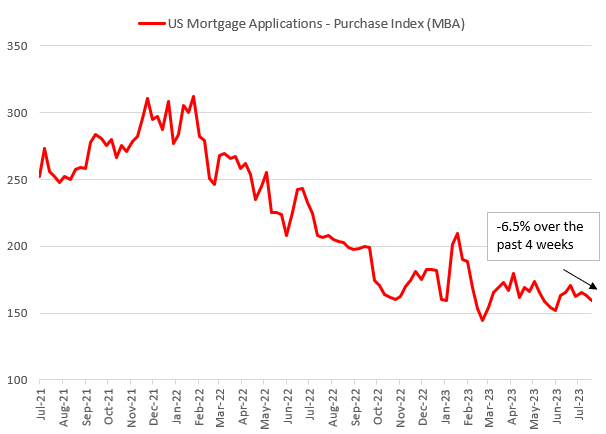Navigating The Long Game: Xi Jinping's Approach To Heightened US Tensions

Table of Contents
Economic Statecraft: Fostering Self-Reliance and Reducing Dependence on the US
Xi Jinping's economic strategy centers on reducing China's vulnerability to US economic pressure. This involves fostering self-reliance and diversifying trade partnerships to lessen dependence on the US market.
Strengthening Domestic Demand:
The Chinese government is actively cultivating a robust domestic market to decrease reliance on exports to the US. This involves:
- Promoting domestic consumption: Through initiatives like tax cuts and increased social welfare spending, stimulating consumer spending and reducing dependence on external demand.
- Technological advancements: Investing heavily in research and development to drive innovation and create high-value-added industries, reducing reliance on imported technologies.
- Import substitution: Promoting domestic production of goods previously imported from the US and other countries, enhancing self-sufficiency and strengthening domestic industries.
These policies aim to reduce US economic leverage by creating a more self-sufficient and resilient Chinese economy, thereby mitigating the impact of potential trade sanctions or economic pressure.
Diversifying Trade Partnerships:
China is actively forging stronger economic ties with countries beyond the US. Key initiatives include:
- The Belt and Road Initiative (BRI): A massive infrastructure project connecting Asia, Africa, and Europe, fostering economic integration and creating new trade routes independent of US influence.
- Participation in regional trade agreements: China's active involvement in agreements like the Regional Comprehensive Economic Partnership (RCEP) strengthens economic ties with Asian nations, diversifying its trade network.
These strategies aim to create alternative markets and reduce overreliance on the US, lessening the impact of potential US trade restrictions.
Technological Self-Sufficiency:
China is investing heavily in indigenous technological innovation to lessen its dependence on US technology, particularly in critical sectors like:
- Semiconductors: Massive investments in domestic semiconductor manufacturing aim to reduce reliance on US-produced chips, crucial for various technologies.
- Artificial intelligence (AI): China is aggressively pursuing AI development to become a global leader, minimizing reliance on US AI technologies.
- 5G technology: China's dominance in 5G infrastructure development reduces dependence on US technology in this crucial communication sector.
This technological self-sufficiency strategy aims to challenge US technological dominance and decrease vulnerability to US sanctions or technological restrictions.
Military Modernization and Strategic Deterrence
Xi Jinping's approach also involves significant military modernization to enhance China's strategic deterrence capabilities and counter US influence.
Expansion of Military Capabilities:
China's military has undergone a rapid expansion and modernization, including:
- Naval expansion: China's navy has grown significantly, with an increased presence in the South China Sea and beyond, challenging US naval dominance in the Indo-Pacific.
- Development of advanced weaponry: Investments in advanced weaponry, including hypersonic missiles and advanced fighter jets, enhance China's military capabilities and strategic deterrence.
This military buildup aims to shift the balance of power in the Indo-Pacific region and reduce the perceived asymmetry in military capabilities with the US.
Assertion of Territorial Claims:
China's increasingly assertive stance on territorial disputes, particularly in the South China Sea, has heightened regional tensions. This includes:
- Artificial island construction: China's construction of artificial islands in the South China Sea strengthens its claims and enhances its military presence in the region.
- Increased naval patrols: More frequent and assertive naval patrols in contested waters further assert China's territorial claims and challenge regional stability.
These actions challenge the established regional order and increase the risk of escalation with other claimant states and the US.
Cybersecurity and Information Warfare:
China's use of cyber capabilities and information warfare is another aspect of its strategic approach:
- Alleged cyberattacks: China has been accused of various cyberattacks targeting US government and private sector entities, aimed at stealing intellectual property and disrupting critical infrastructure.
- Disinformation campaigns: China engages in disinformation campaigns to advance its narrative and influence public opinion, both domestically and internationally.
These activities aim to undermine US national security, influence global perceptions, and enhance China's strategic positioning.
Diplomatic Maneuvers and Strategic Partnerships
Xi Jinping's approach also involves skillful diplomatic maneuvers and the cultivation of strategic partnerships to counter US influence and promote China's interests globally.
Cultivating International Alliances:
China actively fosters stronger relationships with countries worldwide, particularly developing nations:
- Diplomatic outreach to Africa, Latin America, and elsewhere: China actively engages with developing nations through investment, aid, and diplomatic initiatives, building alliances and expanding its global influence.
- Strengthening ties with Russia: China's close relationship with Russia serves as a counterweight to US influence and provides a strategic partner in various global arenas.
These efforts aim to build a network of supportive nations, limiting US influence and expanding China's global reach.
Promoting Multilateralism:
China actively engages in international organizations and pushes for reform of global governance structures:
- Involvement in the UN, World Trade Organization, and other international bodies: China's active participation provides a platform to advance its interests and shape international norms.
- Advocating for multilateralism: China presents itself as a champion of multilateralism, contrasting with what it perceives as unilateral US actions.
These actions aim to shape international institutions and norms to reflect China's interests and challenge the perceived dominance of US-led institutions.
Navigating International Disputes:
China employs a strategic approach to managing international tensions and resolving disputes:
- Mediating regional conflicts: In some instances, China actively engages in mediation efforts to resolve regional conflicts, showcasing its diplomatic capabilities.
- Adopting a pragmatic approach: China often takes a pragmatic approach, balancing assertive actions with diplomatic efforts to manage tensions and pursue its national interests.
This approach aims to enhance China's image as a responsible global player and expand its influence in resolving global challenges.
Conclusion: Understanding Xi Jinping's Long Game in US-China Relations
Xi Jinping's approach to heightened US tensions is multifaceted, encompassing economic statecraft, military modernization, and diplomatic maneuvering. His strategy focuses on fostering self-reliance, diversifying partnerships, and challenging US dominance in various spheres. The effectiveness of this "long game" remains to be seen, but it undeniably reshapes the global landscape and presents significant challenges and opportunities for the US and the international community. The interplay between these elements shapes the evolving dynamics of US-China relations and has profound implications for global stability. Continue exploring Xi Jinping's long game and its implications for the future of US-China relations.

Featured Posts
-
 Harrogate Spring Flower Show 2025 Dates Tickets And What To Expect
Apr 25, 2025
Harrogate Spring Flower Show 2025 Dates Tickets And What To Expect
Apr 25, 2025 -
 The Rise Of Otc Birth Control A Post Roe Analysis
Apr 25, 2025
The Rise Of Otc Birth Control A Post Roe Analysis
Apr 25, 2025 -
 Peace Initiatives On The Dnieper Progress And Future Directions
Apr 25, 2025
Peace Initiatives On The Dnieper Progress And Future Directions
Apr 25, 2025 -
 The Ultimate Guide To Childproof Makeup Storage For Parents
Apr 25, 2025
The Ultimate Guide To Childproof Makeup Storage For Parents
Apr 25, 2025 -
 Australias Eurovision Hosts Courtney Act And Tony Armstrong
Apr 25, 2025
Australias Eurovision Hosts Courtney Act And Tony Armstrong
Apr 25, 2025
Latest Posts
-
 Navigating The Chinese Market The Struggles Of Bmw Porsche And Other Auto Brands
Apr 26, 2025
Navigating The Chinese Market The Struggles Of Bmw Porsche And Other Auto Brands
Apr 26, 2025 -
 The Growing Market Of Betting On Natural Disasters A Case Study Of The La Wildfires
Apr 26, 2025
The Growing Market Of Betting On Natural Disasters A Case Study Of The La Wildfires
Apr 26, 2025 -
 The La Wildfires And The Gambling Industry A Concerning Connection
Apr 26, 2025
The La Wildfires And The Gambling Industry A Concerning Connection
Apr 26, 2025 -
 Bmw And Porsches China Challenges A Growing Trend Among Automakers
Apr 26, 2025
Bmw And Porsches China Challenges A Growing Trend Among Automakers
Apr 26, 2025 -
 Is Betting On Natural Disasters Like The La Wildfires Ethical
Apr 26, 2025
Is Betting On Natural Disasters Like The La Wildfires Ethical
Apr 26, 2025
